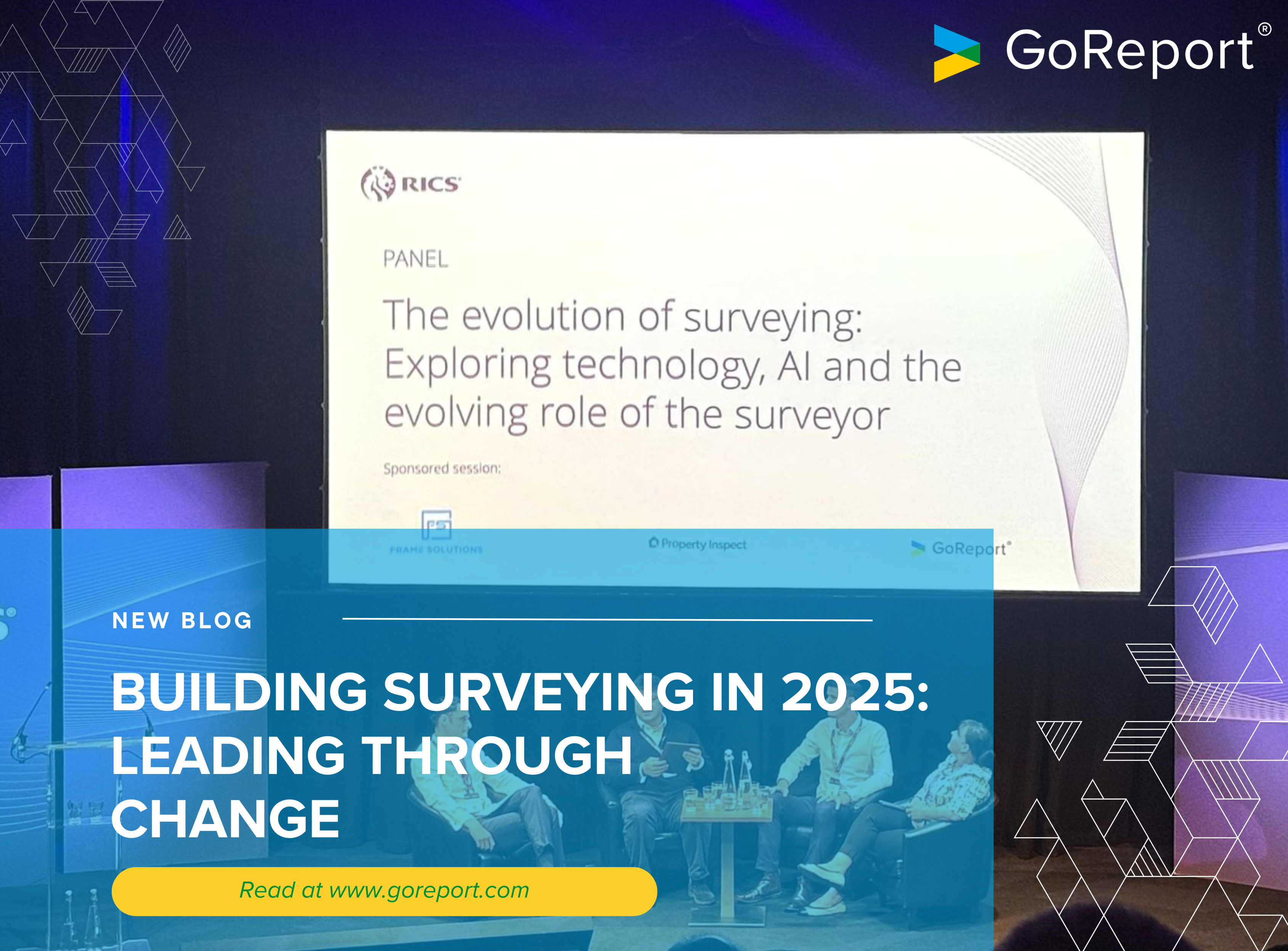Why Digital Matters for Surveying’s Future

It’s been said time and time again that the surveying industry has changed rapidly over the last couple of years. Not only is that true, but the change sees no sign of slowing down. Demand for inspections, valuations, and compliance checks is growing, but surveyors are struggling with something more fundamental: finding people to deliver the work. Many surveyors are now in the middle or later stages of their careers. While this, of course, brings a huge depth of knowledge to the profession, it does mean the industry has to think carefully about the next generation. The flow of new talent isn’t as strong as it could be, and when graduates do join, some don’t stay long enough to build a career.
Too often, graduates picture surveying as paperwork, clipboards, and long nights typing up reports. That doesn’t stack up well against industries where the day-to-day is powered by digital apps, clean dashboards, and collaboration tools. If the profession wants to compete for talent, it needs to be clear: surveying isn’t stuck in the past.
The Talent Gap Runs Deeper than Recruitment
Talk to directors and you’ll hear the same thing: recruitment is tough, retention tougher. Winning work isn’t always the issue, but delivering it is. Even when firms manage to fill roles, it can feel like holding sand in your hands. Talented graduates arrive, spot outdated workflows that they’d rather not faff around with, and decide they can use their skills better elsewhere.
And who can blame them? Project management, construction tech, and asset management roles all promise a career path where digital is built-in, not bolted on. If surveying doesn’t modernise, it risks becoming the “paper profession”, an option that simply doesn’t appeal to new talent. That’s when the problem moves from “hard to hire this year” to “no pipeline at all in ten years.”
Why Digital Natives Won’t Settle for Clipboards
Graduates are digital natives, so why hand them a clipboard? Think about what today’s students are used to. Their entire education has been shaped by cloud storage, real-time collaboration, technology-based systems and tablets that sync across devices. Accuracy, automation, and accessibility aren’t luxuries to them, but the baseline they’re used to.
Now picture their first week in a surveying practice. Instead of a clean digital interface, they’re handed a clipboard, a pencil, and told they’ll spend their evenings typing up field notes. Not only is it inefficient, it’s jarring and makes a professional role feel like busywork.
We’re not talking about catering to whims, but rather meeting the standards of modern working life. In 2025, asking graduates to retype notes by hand is as outdated as asking them to save projects on floppy disks. It signals that the profession is running behind.
Digital Capture Reshapes the Day-to-Day
Yes, digital data capture is highly efficient, but what really matters when it comes to talent retention is how it changes the feel of the work. When the admin shrinks, the craft comes forward.
Surveyors using digital tools experience the job differently. They capture notes, photos, and measurements once, in the field, and see them flow straight into structured reports. They aren’t chained to a desk at night, correcting typos or reformatting tables. They spend their time on the part that matters: observing, analysing, and applying professional judgement.
For graduates, that’s a huge difference. A day spent stuck in transcription feels like data entry. A day spent using digital capture feels like surveying. It reinforces why they joined the profession in the first place and it helps them imagine a future in it.
Competing for Talent is Competing on Perception
Recruitment has always been competitive, but it seems to have worsened over recent years with the rise of demand. Pay and promotions matter, but the real difference is the story a firm tells each time a candidate walks through the door or checks a careers page.
For graduates, perception matters. A practice still built on paper notes and Word templates doesn’t simply look a little slow, it risks looking dated. To someone just starting their career, that signals more than an old-fashioned process. It suggests a workplace where innovation is optional, and where their career progression could stall before it even gets going.
By contrast, businesses that take advantage of digital capture send a very different message. They say: we value your time, we invest in the tools you’ll need to succeed, and we want you focused on the work that really matters. That message lands not only with graduates, but with experienced professionals weighing up whether to stay put or join a competitor.
In a market where good people have choices, perception becomes a competitive edge. Businesses that look modern, forward-thinking, and committed to supporting their staff will naturally pull in talent. When the daily experience of the job matches that message – when surveyors see that the tools make their lives easier – they’re far more likely to stay.
Surveying isn’t the only profession facing this shift. Law firms are highlighting their AI-assisted research platforms. Accountants sell careers where cloud systems do the heavy lifting. Architects showcase immersive digital design tools.
They’re all competing for the same digitally native graduates, and they’re winning because they’ve made technology part of the career story. Surveying doesn’t need to mimic them, but it does need to learn the lesson. If the perception is that “this is where you’ll be using clipboards while your peers use cutting-edge apps and AI,” then talent won’t stick around.
Protecting the Craft, Not the Clipboard
It’s a fair concern: does bringing in digital capture risk losing the craft of surveying? After all, the profession has always been built on sharp observation, meticulous note-taking, and the ability to turn fieldwork into clear, reliable reports. These skills are what give surveying its credibility. They’re what clients trust.
But the truth is that digital tools don’t take that away, they shine a light on it. They strip out the repetitive admin, the late-night typing, and the double-handling of information that have nothing to do with professional judgement. What remains is the essence of the job: the surveyor’s expertise, their interpretation, and their ability to explain what the data actually means for a client’s decision.
The skill of a surveyor has never been about filling in endless boxes or handwriting reams of notes. It has always been about turning observation into insight. Digital capture simply clears the space for that insight to come through. It makes sure the time and energy of a surveyor is spent on the parts of the job that really matter.
That’s the crucial point. The craft will always remain. It’s the clipboard, the duplicated admin, and the unnecessary friction that need to go. When those fall away, the profession doesn’t lose its identity, but instead gains clarity, relevance, and room to grow.
From Reflection to Action
Tackling this challenge doesn’t need a grand strategy. It begins with simple, practical steps, and the first is reflection. Surveying businesses should be asking themselves:
- What does our recruitment process signal about how we work? If graduates see outdated tools at the interview stage, they’ll assume that’s the daily reality.
- How much time do our staff still spend on transcription and reformatting? If the answer is “hours every week,” then the burden is too heavy.
- Do our current tools show that we respect our surveyors’ time and skills? Technology isn’t just a perk, but a part of valuing people and their time.
Questions only go so far. Implementation is where you’ll stand out. For some, that might mean piloting digital capture on a single type of survey, gathering staff feedback, and building confidence from there. For others, it could be about setting a clear timeline to retire old reporting templates, making sure everyone knows the move to digital isn’t optional, but the future.
It also means involving staff at every stage. Senior surveyors need reassurance that their expertise is central, not sidelined, graduates need to see that the firm is willing to invest in tools that make their work engaging, and managers need the data to prove that the shift saves time and improves accuracy.
Digital capture won’t solve every recruitment challenge overnight, but without it, the profession risks being left behind in the talent race. Graduates have choices, and they will choose workplaces that look and feel like they’re preparing them for the future, not holding them in the past.
Beyond the Buildings
Surveying has never been just about buildings. It’s about people: the professionals delivering the work and the clients relying on it. Right now, the profession risks losing the people who will define its future unless it changes how the work is done.
Graduates don’t need clipboards. They need tools that reflect the world they’ve trained in. Digital capture is part of the story businesses tell about themselves, and the stronger that story, the stronger the profession’s future.
Want to see how digital data capture could reshape the way your firm recruits and retains staff? Request a GoReport demo and find out how smarter tools can make surveying a career to aspire to, not avoid.







